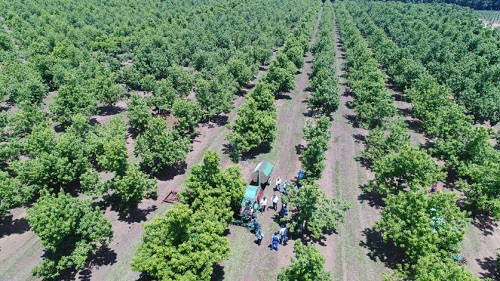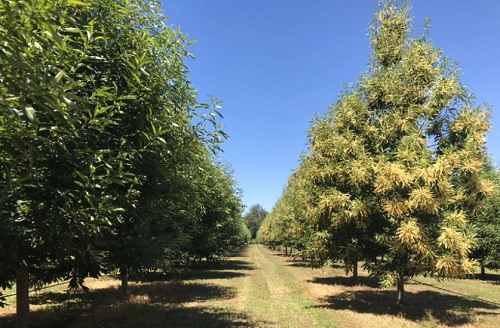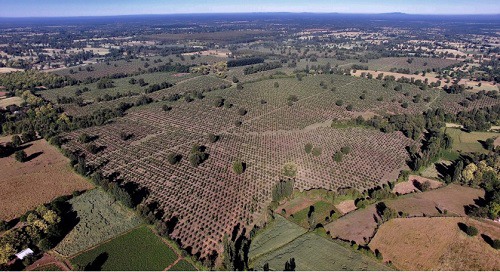Chile continues be the most trusted supplier of southern hemisphere chestnuts and exports destined for Italy have now increased from 9% to 11%.
In 2020, chestnut exports to Italy had a value of €2.8 mln and although this is a 6% contraction compared to 2019, the quantities remained stable at 1,800 tons, confirming Chile as the only South American country to supply sweet chestnuts.
 Photo provided by ProChile
Photo provided by ProChile
A total yield of more than 5,000 tons is expected for this year, but the final quantities depend on the price in foreign markets, of which Italy is the most important.
Many varieties available
The main varieties planted are Marrone di Cuneo, Marrone di Marradi, Marrone di Città de Castello and Marrone di Castel Borello.
In Chile, conditions are perfect for chestnut cultivation. There are no diseases such as Cryphonectria parasítica, Dryoscomis kuriphilus and Cydia splendana and a very low presence of Gnomoniopsis castanea, which in other latitudes cause great losses in production and require the use of chemicals both to plants and fruits. Chile can therefore offer chestnuts that are chemical free. Another major advantage is that the percentage of chestnuts not suitable for consumption is less than 5%.
 Photo provided by ProChile
Photo provided by ProChile
"In recent years, more than 1,500 hectares of chestnut-type groves have been planted and, since 2017, there has been a steady growth in the supply of chestnuts. The estimated yield for 2021 is about 1,200 tons and each year an additional 100 hectares come into production," said Edmundo Valderrama, general manager of Agrisur.
 Photo provided by ProChile
Photo provided by ProChile
For the most part, chestnut trees in Chile come from seeds with no varietal identity, meaning that Chile's crop is a blend of chestnuts of different shapes, flavors and colors.
The Ñuble region is a leader in cultivation
The Ñuble region in southern Chile is the largest first region in the country, with an area of approximately 800 hectares of chestnut trees. "This area, located in front of the Andes mountain range, has moisture-free soil with excellent drainage and no soil compaction, perfect for growing chestnuts," said expert Pablo Grau. He is a researcher at Chile's agricultural Instituto de Investigaciones Agropecuaria.
Chile as a trade partner
In addition to climate and territorial conditions that favor the production of healthy fruits, Chile offers the advantage of a second harvest during the year. Since the country is located in the southern hemisphere, the harvest takes place between February and July, months that correspond to the end of summer and the beginning of winter.
Italian companies can count on the support of ProChile for commercial partners. It is a governmental agency that promotes exports and provides various tools to strengthen commercial exchange. The new online service One Click Import is an example that aims to make it even easier for international importers to find their ideal counterpart in Chile.
Contact: ProChile Italia
ProChile Italia
Passaggio degli Osii 2
20123 Milano
Phone.: (+39) 02 864093
Email: italia@prochile.gob.cl
Website: www.prochile.gob.cl
